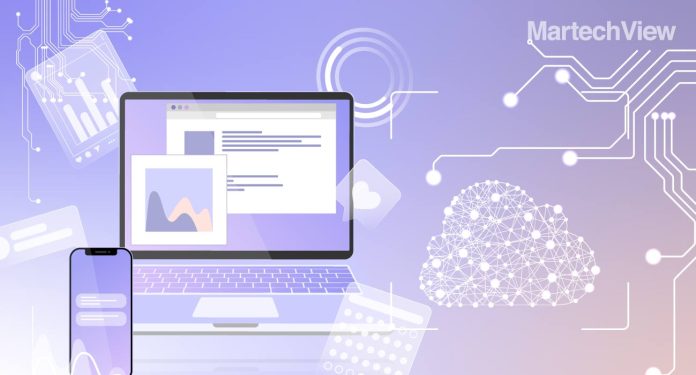By mixing fundamental marketing concepts from previous generations with state-of-the-art AI technology, today’s ad agencies and brands can harness machine learning to stay relevant.
Marketers have more time to prepare for the post-cookie future now that Google has delayed the end of third-party cookies until mid-2024. Even said, the sooner marketers start implementing new solutions, the simpler it will be to continue to successfully target and engage their audience across digital channels after Google turns off cookies.
Brands must find out how to reach customers with the right message based on objectives that support their marketing strategy. They pivoted to a privacy-first approach in reaction to Google’s move and satisfy growing consumer preferences. They’ll need to embrace cutting-edge technologies that allow them to return to their roots and deploy contextual advertising in a cookie-free environment.
And this is precisely where Deep Learning takes center stage in deciding the future of digital advertising.
Developing extremely comprehensive user profiles about individual customers will become more difficult as we move closer to a cookie-free future.
Deep learning provides a practical answer for keeping effective advertising on a consumer’s device by merging granular first-party data with cohort averages. This allows advertisers to keep employing successful marketing methods they’ve been doing for years but with more anonymous tactics.
Similarly, deep learning allows the solution to go beyond generic information regarding contextual targeting while studying a website. It can scan each article individually and save images, keywords, and even sentences inside a text. Natural Language Processing (NLP) algorithms are then used to examine the data, determine keywords’ value, and assign the site to the most relevant categories.
Why is deep learning a game-changer for advertisers?
There are four main reasons why deep learning will transform the results advertisers get from their investments in digital channels:
Prepare for the cookie-free future by future-proofing your business
The clock is ticking toward a cookie-free future, so advertisers must develop new methods to interact successfully with their customers without relying on third-party cookies.
Deep learning enables advertisers to use technology to contact the appropriate customers with the most compelling content at the right moments, allowing them to generate income in a cookie-free future.
Personalized advertisements
Advertising executives use generalized demographic information from surveys and censuses to determine which ads would be most effective and where to place them. With improved technology, advertising teams can target relevant ads directly to interested audiences with new levels of consumer insight.
Advertising teams can now segment populations into targeted groups to create higher ROI. These groups are selected by deep learning algorithms that recognize patterns in consumer behavior and determine which messages resonate best with each individual. As a result, 14% of marketers already use AI for customer segmentation today.
These shifts quickly become an industry norm as AI utilization grows, even amid pandemic-era budget cuts. And consumers are catching on, too. Today, 80% of people who consider themselves “frequent shoppers” say they only buy from brands that personalize their advertising experiences.
Deep learning allows advertisers to be more creative and thrive through its ability to segment and target specific audiences with relevant messages.
Advertisement creation with AI
Personalization, while incredibly effective, requires a considerable amount of resources. Frequently, it demands several ad iterations for the same campaign and can monopolize an advertising team’s time. However, ad-creation AI is changing that. In their unique voice, brands can optimize their campaign language and deliver the right message at the right time to the right people.
For example, Facebook increased email marketing ROI by leveraging innovations from startup Phrasee. They developed a messaging framework based on the ideal customer journey. The AI-powered campaign delivered a 275% ROI on ad spending, a 23% average click rate uplift, and a 15% average open rate uplift.
Campaign planning
Estimating the success of an advertising campaign has long been a guessing game. Using AI-enabled tech and its role in predictive analytics, advertising teams can have more insight into their need to make effective decisions.
In predictive analytics, patterns in historical data are used to predict how a campaign will perform in the future. This process requires high-quality data and AI. Once successfully developed, advertising teams can use the analysis to find the campaign and audience opportunities they otherwise may have missed. Brands can “test” the effectiveness of campaigns before they distribute them.
With predictive methods, brands have boosted their average conversion rates by more than 22%. Due to this, many advertisers rely on this process when conceptualizing campaign ideas. Ninety-one percent of top marketers are either fully committed to predictive marketing or are implementing predictive marketing strategies.
Using AI, brands can identify which audiences will likely convert from their campaigns. According to the Aberdeen Group, firms investing in predictive analytics are almost twice as likely to segment their audiences and successfully target their campaigns. This improves ROI and campaign performance, reducing risk and saving you millions of dollars on your bottom line.
AI plays an increasingly crucial role as more teams use it to create successful ad campaigns, paving the industry’s future. Thanks to improved personalization, ad creation, and predictive methods, one-size-fits-all campaigns are a thing of the past. Brands can avoid being left behind by exploring AI and deep learning possibilities for creating successful and impactful advertising campaigns.
How has AI played a role in constructing your advertising strategy for 2023?










